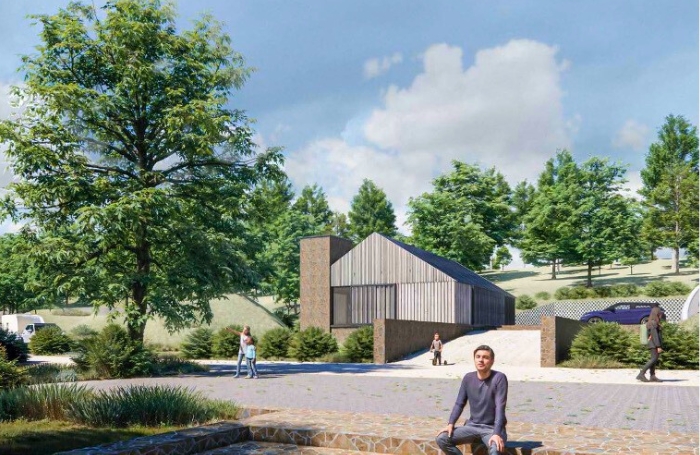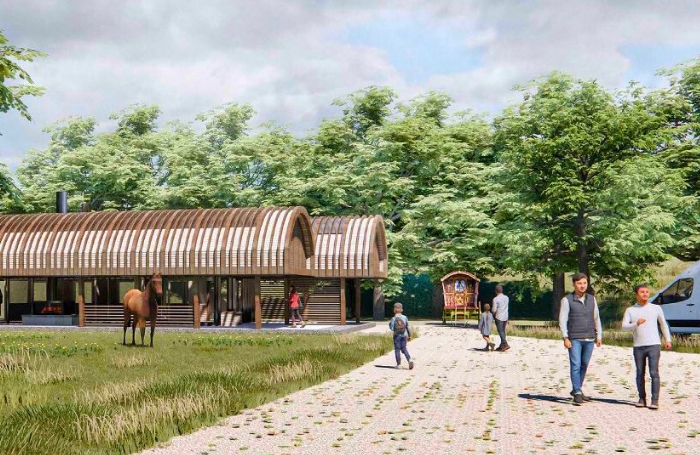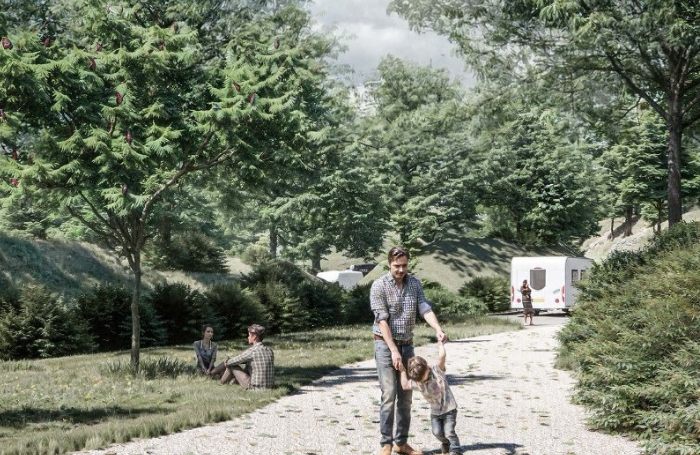Architecture is often celebrated for the permanence of the buildings it produces, and its ability to anchor memory, identity, and legacy in structures of wood, stone, and steel. But for Gypsy, Roma, and Traveller (GRT) communities whose cultures are shaped by centuries of movement, seasonal rhythms, and fluid geographies, this focus on permanence is a fundamental mismatch.
These cultures offer a compelling counter-narrative to mainstream architectural thinking. Their homes are not monuments but vessels of mobility; their spaces are not fixed but adaptable, ephemeral, and deeply personal.
Or at least they were.
Centuries of neglect and prejudice, and a deep misunderstanding of the GRT culture, its lifestyle, traditions, and its needs mean that stereotyping is rife.
Architect and Traveller Darren Ward is trying to challenge perceptions of what Traveller sites can be. With the help of some GRT campaign groups he has produced The Modern Nomad, a toolkit described as a “community vision guide” illustrating community-driven aspirations of what designed and planned sites might look like while considering the idiosyncrasies of varying UK contexts and common GRT accommodation typologies.
Darren’s work prompts these urgent questions:
- Can design embrace the community’s cultural traditions such as impermanence in increasingly built-up environments without losing meaning and facilitate interdependent multigenerational families?
- What does it mean to build for lives in motion?
- How might the built environment - from architects and landscapers to local planning authorities - embrace these communities whose relationship has historically not been rooted to a fixed place, but in experience?
And also: what should nomadic communities look like today?

What are some of the issues surrounding GRT sites?
Local authorities in the UK do not have a statutory duty to provide permanent or transit sites for Gypsies and Travellers, since its removal in 1994. They are, however, required to assess the needs of these communities. Darren argues these needs-based assessments are inadequate in the majority of local authority areas, and are often overlooked and rarely met.
“Resistance against GRT accommodation and a lack of available accommodation has added to unauthorised sites, or the unauthorised expansion of sites,” he says. “Density is a real issue as unauthorised encampments can expand exponentially in an unregulated manner. Mobile homes are situated dangerously close to each other creating fire risks, and a lot of sites typically have a single point of access, adding further to this risk. These examples lead to bigger issues, larger costs and reinforces longstanding prejudices on the failures of sites.”
Additionally, boundary treatments tend to be “defensible”, with sites hidden behind high walls or fences. It’s not a great environment to live in, or one to look at, Darren says. It also adds to widespread misconceptions about how the GRT community lives.
While a lot of Travellers now live in permanent bricks-and-mortar homes, Darren notes that this not always by choice. A chronic shortage of transitory sites, driven by restrictive legislation, has made staying put the only viable option for the majority.
The community vision is of places to live that are connected to their surroundings, with more appropriate connectivity and thoughtful design - whether small stopping sites or larger hybrid developments that combine stopping bays, community buildings, and permanent homes. One model, currently being facilitated in places like Ireland, involves designing sites for five or six families as opposed to large sprawling solutions. These smaller sites are typically easier to manage but require multiple locations to meet demand.
Find out more about RIBA's Inclusive Design Overlay to the Plan of Work.

What are the key needs expressed by the GRT community?
The Modern Nomad comes in two parts, the first presenting the results of community workshops and a questionnaire sent out to the GRT community on its aspirations for better accommodation.
Some of the improvements respondents called for were:
- Improved plot layouts and caravan siting, with flexibility for extended families;
- More open space and landscaping;
- Open boundaries using trees and planting;
- Better access to light, utilities, and storage;
- Use of quality materials and green technologies to reduce energy costs.
There was also a consensus that different options should be available in different local authorities, ranging across group housing, serviced sites, halting sites and private sites.
Other community-specific needs include:
- Flexible structures like ‘community hubs’ for on-site learning, workshops, storage, community celebrations, and socialising for knowledge distribution and social interaction;
- The re-introduction of ‘bridleways’ to encourage living closer to nature, biodiversity and provide connections within sites;
- Flexible spaces for workshops and vocational employment to support traditional crafts and employment generating activities;
- Contextual and site-specific responses to show careful consideration of surrounding rural, suburban, and urban architectural conditions and be site-specific, reflecting local character to create positive relationships and add value to the wider community;
- Enhanced connectivity and integration to towns, cities, and the countryside, including improved site selection, public transportation links and access to health and education.
Long-term success, Darren argues, depends on whether these places can support large, interdependent, multi-generational families. That means flexible learning spaces and community areas that reflect the dynamic nature of GRT life.
The second part of the toolkit offers illustrative design aspirations in three scenarios:
- Temporary and Stopping Places
- Transit and Permanent Sites
- Bricks and Mortar Houses
Stopping places are depicted with amenity buildings and a community hub set in natural landscapes. Darren argues that roadside opportunities should be designed in close collaboration with the local highways consultants, landscape designers and ecologists to improve the viability of a proposal and site conditions of living in proximity to infrastructure.
Examples of potential sub-division of plots on hybrid sites are put forward in suburban locations as a means of managing increased density on permanent sites. Hybrid houses in more urban locations could allow flexible accommodation for different family sizes while maintaining a consistent street scene with non-GRT housing in the immediate context.
He promotes the idea that Traveller sites can reflect the local vernacular in building forms through elements such as the amenity structures on site, and introduces the idea of creating a community inspired architecture for social spaces that derive their form from the historic ‘gypsy-vardo caravan’ silhouette as an indicative example.

What are the systemic challenges the GRT community faces?
There is flexibility running through Darren’s site layouts but he recognises in planning terms this can be challenging. Subsequently, he advocates for long-term thinking, stating it should be a part of the design process to futureproof sites and challenge outdated guidance that currently inform GRT accommodation templates.
The challenge, then, is to create accommodation for the GRT community that is informed by its socio-cultural dynamics and reflect a local context to improve on the existing narrative. Good placemaking is based on a people first approach, so it lets involve everyone in this and stop ignoring the GRT community.
Darren has contributed to an upcoming book from RIBA Publishing called Roaming Britain, edited by Lauren Alderton and Alice Power.
Find out more and download The Modern Nomad toolkit.
Thanks to Darren Ward.
Text by Neal Morris and Paul Hirons. This is a Professional Feature edited by the RIBA Practice team. Send us your feedback and ideas.
RIBA Core Curriculum topic: Inclusive environments.
As part of the flexible RIBA CPD programme, professional features count as microlearning. See further information on the updated RIBA CPD core curriculum and on fulfilling your CPD requirements as a RIBA Chartered Member.









